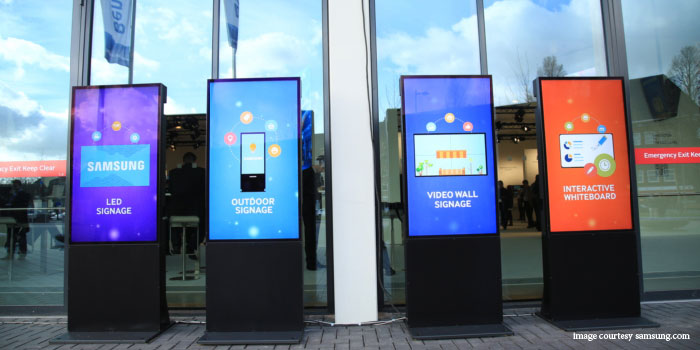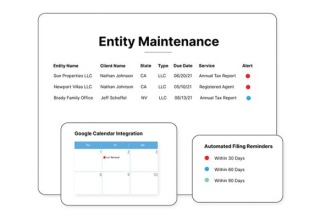
In today’s marketing world, staying ahead means adapting to new technologies and finding innovative ways to engage with your audience. One such technology that has significantly impacted how businesses communicate with their customers is the digital signage system.
This article will guide you through the process of integrating digital signage into your marketing strategy, ensuring you make the most of this dynamic tool.
What is a Digital Signage System?
A digital signage system is essentially a collection of electronic displays that can show all sorts of digital content, from images and videos to streaming media and informative text. Managed through specialized software, these displays can be updated from one central location.
You often see these systems in places like malls, train stations, museums, sports arenas, shops, hotels, restaurants, and office buildings. They’re used for a variety of purposes, such as guiding visitors, displaying art or exhibits, promoting products, or advertising outdoors.
Understanding the Benefits of Digital Signage
Integrating digital signage into your marketing strategy can bring several advantages, each contributing to a more effective way of communicating with your audience. Here are some detailed benefits:
- Increased Engagement: Unlike static signs that might go unnoticed, digital screens are vibrant and dynamic. They are more likely to catch the eye of passersby, making them stop and watch. This is especially true in environments where consumers have brief wait times, such as check-out lines or transit stations.
- Flexibility: One of the standout features of digital signage is its adaptability. You can change the content displayed on your digital screens quickly and as often as needed. This is perfect for responding to the latest marketing trends or updating promotional materials to reflect new sales or products almost instantaneously.
- Cost-Effectiveness: While the initial setup for digital signage can be an investment, over time, it saves money compared to the ongoing costs of traditional print advertising. With digital signs, you cut out expenses for printing, distribution, and disposal of old marketing materials, making it a financially savvy choice in the long run.
- Enhanced Customer Experience: Digital signage does more than just advertise. It can enhance the customer experience by providing a visually appealing display of products and promotions, making your brand more memorable and significantly improving customer satisfaction.
Essential Steps to Integrate a Digital Signage System into Your Marketing Strategy
Step 1: Set Clear Objectives
The starting point for integrating a digital signage system into your marketing strategy is clear goal-setting, says Displaynow.io. Determine what you want your digital signage to accomplish. Are you aiming to increase brand awareness or drive more sales? Perhaps you want to inform customers about new products or improve the overall customer experience. Setting SMART (specific, measurable, achievable, relevant, and time-bound) goals helps guide the content and strategic direction of your digital signage, ensuring every message is targeted and effective, says Atlassian.
Step 2: Know Your Audience
Knowing your audience is essential for crafting impactful digital signage content. Consider various characteristics of your audience, including age, demographics, interests, and behaviors. This insight allows you to create content that connects and engages directly with the viewers. For example, younger audiences might respond better to fast-paced, trendy content, while older viewers might appreciate detailed, informative messages.
Step 3: Choose the Right Locations
Where you place your digital signage can significantly affect its success. For maximum impact, position your displays in areas where they are most visible to your intended audience. High-traffic areas such as store entrances, waiting areas, and near the checkout counters are prime spots. The goal is to have your digital content where it can attract attention and deliver messages at the most opportune moments.
Step 4: Design Compelling Content
For digital signage, content is what attracts and holds attention. Successful digital signage content combines high-quality images and videos with concise text and a clear call to action (read more). It’s important to vary your content to keep it fresh and engaging—mix promotional material with timely information to keep your audience interested and responsive.
Step 5: Select the Right Digital Signage Software
The effectiveness of your digital signage also depends on the software you choose. The ideal digital signage software should be user-friendly and support essential features like scheduling, real-time updates, and comprehensive content management. Make sure the software is compatible with various media formats and the types of screens you plan to use. This flexibility will be crucial as your digital signage needs evolve.
Step 6: Test and Optimize
After setting up your digital signage, don’t just leave it running on autopilot. Regular testing and optimization are key to ensuring your content continues to meet your objectives and engages your audience. Gather data on how viewers interact with your signage—what attracts more views or leads to conversions. Use this data to tweak and refine your strategy and content, enhancing the overall effectiveness of your digital signage campaign.
Step 7: Ensure Compliance and Consistency
Lastly, it’s essential to ensure that all content displayed meets local regulations and adheres to your brand’s visual and messaging guidelines. The consistent presentation across all your marketing platforms reinforces your brand identity and helps strengthen your marketing messages. Regular audits and updates can help maintain compliance and ensure that your digital signage remains a powerful tool for your business.
Conclusion
Integrating a digital signage system into your marketing strategy offers a powerful tool for enhancing customer engagement and driving sales. By following these steps, you can effectively implement digital signage and see a significant impact on your business outcomes.
Digital signage isn’t just about technology; it’s about creating more effective ways to connect with your audience. Start today, and see how a digital signage system can transform your marketing strategy and help your business grow.
Last Updated: April 26, 2024



















